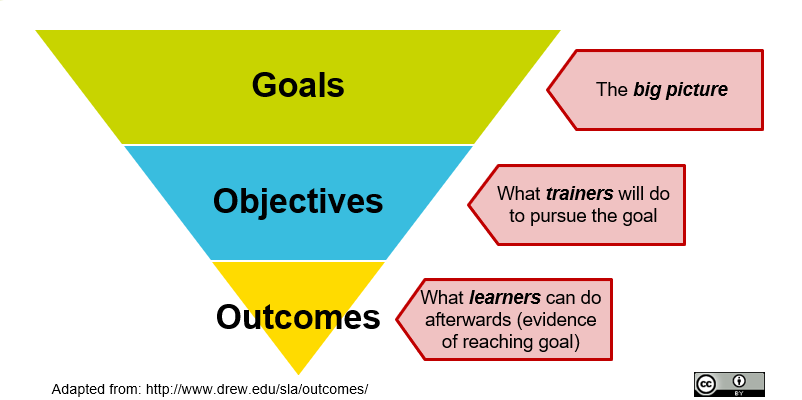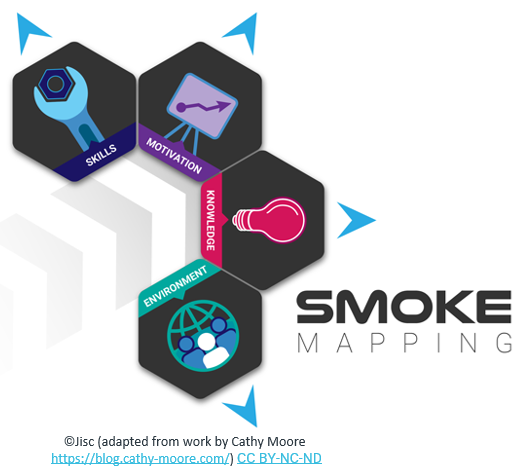Goals and audience
Goals and audience
Developing training is iterative and will involve ongoing feedback. It is essential, however, to start with a clear idea of what you are trying to achieve with your training, who it's aimed at and what learners will be able to do after completing training.
- Your topic / service:
- Include a short descriptive title. Why do learners need to know about your topic/service? What does it offer? What benefits does it have?
- Training objective(s):
- What is your overarching goal? Why are you doing this training? What would success look like? This can include developing skills, gaining knowledge and changing attitude, improving service awareness/use etc
- Audience:
- Who is your target audience? This could be particular roles (eg researcher, students), knowledge level (eg aimed at beginners) or task based - eg those who want to be able to do a specific task. What are their motivations/fears?
- Learning outcomes:
- What will learners gain from your training? What will they be able to do? What will they know? It is helpful to use the phrase ‘By the end of this training you will: Be able to…. Be familiar with… Have practiced…
- Pre-requisites:
- Is there any knowledge that is useful / required? Any other courses that it would be useful to complete beforehand?
Goals, objectives and outcomes
What's the difference? It can be easy to focus on what you want to achieve as a trainer rather than what learners will achieve. While there is no single correct definition, a common way of explaining the difference between goals, objectives and outcomes is:

- Goals
- big picture description of what trainers hope to achieve with their students
- Objectives
- what trainers will do to help learners achieve the goals
- Outcomes
- the knowledge, skills, or abilities that learners should be able to demonstrate at the end of a training experience
Audience
Another useful model for thinking about your audience is the SMoKE model (skills/ motivation/ knowledge/ environment).
This isn't a complicated process - it's just a framework to help you think about your audience in more detail. This is especially important with online delivery as it gives you a more holistic picture of the barriers and challenges that need to be addressed.
